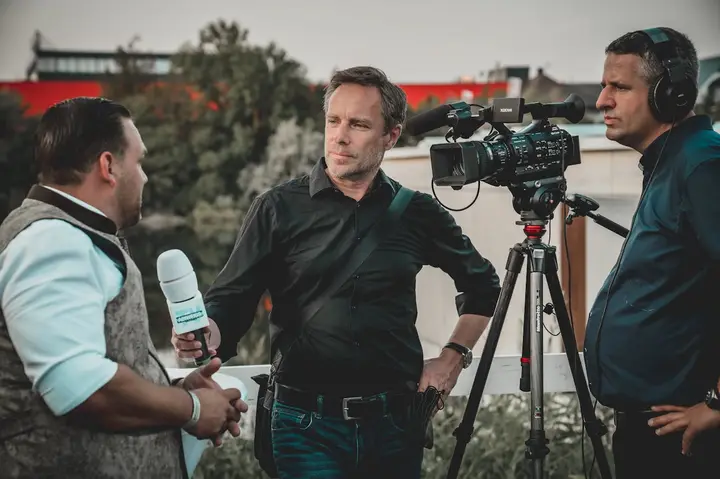Harnessing Resonance: Power Conversion Made Efficient
Posted by: sunxin in MOOC 3 months, 3 weeks ago
In the world of power electronics, efficiency is king. Enter resonant power converters, a technology that's revolutionizing the way we manage and convert electrical power. These converters, which include inverters, rectifiers, and DC converters, operate by modulating power through high-frequency sinusoidal waveforms. Intrigued? Let's dive in and explore the fascinating world of resonant power conversion.
Unveiling the Mysteries of Soft Switching: Revolutionizing Power Converter Efficiency
Posted by: sunxin in MOOC 3 months, 3 weeks ago
In the world of power electronics, efficiency is the name of the game. As we strive to make our devices smaller, faster, and more powerful, the traditional hard-switching methods used in power converters have begun to show their limitations. Enter soft switching, a game-changing technique that promises to revolutionize the efficiency of power converters. In this article, we'll delve into the intricacies of soft switching, exploring its benefits, challenges, and real-world applications.
Unveiling the Mysteries of Single-Phase DC-to-AC Converters
Posted by: sunxin in MOOC 3 months, 3 weeks ago
Have you ever wondered how the electricity in your home transitions from the direct current (DC) produced by solar panels or batteries to the alternating current (AC) that powers your appliances? The answer lies in a fascinating world of electronics and engineering known as single-phase DC-to-AC converters. In this article, we'll delve into the inner workings of these devices, exploring their design, operation, and the various techniques used to approximate a sine wave – the waveform that powers our lives.
The Full Bridge Converter: Versatile Power Conversion for DC to AC and AC to DC
Posted by: sunxin in MOOC 3 months, 3 weeks ago
Power conversion is an essential component of modern electronics. One of the most versatile and widely used power conversion devices is the full bridge converter, also known as a full bridge inverter. This device can convert direct current (DC) to alternating current (AC) and vice versa, making it a key player in various applications ranging from solar power systems to computer power supplies. Let's delve into the intricacies of this remarkable converter.
Harnessing Power: The Science of Three-Phase Inverters
Posted by: sunxin in MOOC 3 months, 3 weeks ago
Introduction
Unveiling the Secrets of Climate Change: The Unmistakable Human Fingerprint
Posted by: sunxin in MOOC 3 months, 3 weeks ago
Have you ever wondered how scientists came to the conclusion that our planet is warming, and more crucially, that this warming is a direct consequence of human activity? The quest to understand climate change is a journey through centuries of scientific discovery, and the evidence is as compelling as it is comprehensive. Let's delve into the story of climate science and explore the risks we face, the evidence behind them, and the paths we can take to secure a sustainable future.
The Winthrop Center Case: Lessons in Sustainable Real Estate Development
Posted by: sunxin in MOOC 3 months, 3 weeks ago
The Winthrop Center, a landmark sustainable development project in Boston, presents a compelling case study in the challenges and opportunities of green building. From its inception, the project faced hurdles that are emblematic of the broader real estate industry's transition towards sustainability.
The Intersection of Climate Change and Real Estate: An In-Depth Analysis
Posted by: sunxin in MOOC 3 months, 3 weeks ago
In today's rapidly evolving world, the real estate industry stands at a critical juncture. The specter of climate change looms large, casting a shadow over the valuation, investment, and development of properties worldwide. As we delve into this intricate relationship, we uncover a fascinating interplay of market dynamics, policy responses, and investor behavior.
The Future of Real Estate: Sustainable Finance and Green Buildings
Posted by: sunxin in MOOC 3 months, 3 weeks ago
Introduction
The Economic Case for Green Buildings: A Market Perspective
Posted by: sunxin in MOOC 3 months, 3 weeks ago
In an era where environmental consciousness and sustainability are paramount, the real estate sector stands at a crossroads. The traditional model of development, driven by luxury and profit, is being challenged by the growing importance of green buildings. But what makes a green building economically viable? How can we make a compelling business case for green buildings that aligns with the triple bottom line of people, planet, and profit?
Recent Posts
- Tragedy Unfolds: The Heartbreaking Attack at Mogadishu's Leo Beach
- Clash in Liverpool: The Battle Between Anti-Racism and Anti-Immigration
- Tragedy Unfolds: Kerala's Heartbreaking Battle with Landslides
- Tragedy in Tarim: A Glimpse into the Aftermath of Israeli Aerial Strikes
- The Tragic Attack on Hamama School: A Story of Innocence Lost in Shik Radwan
Categories
- Official Announcement (3)
- News (1653)
- 新闻 (28)
- Technology (300)
- 科技 (235)
- 科普 (418)
- Science (409)
- 公开课 (180)
- MOOC (183)
- Business (36)
- 揭秘 (143)
- Mysteries (124)



